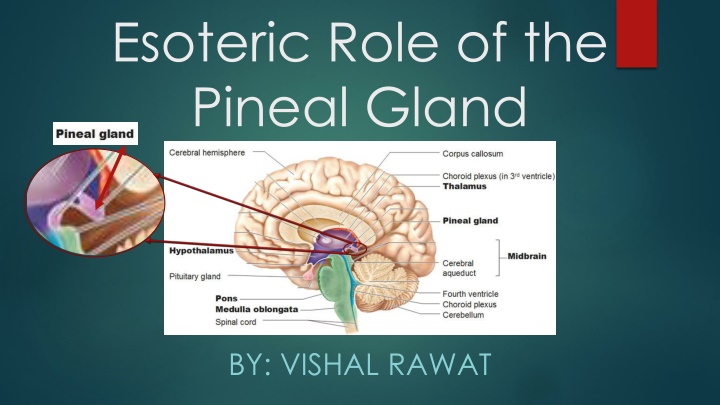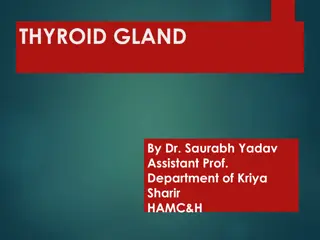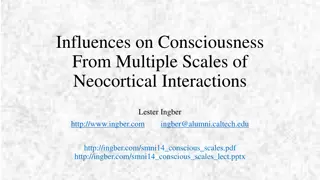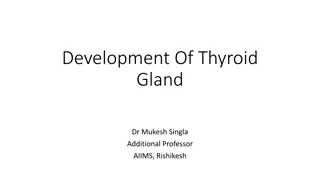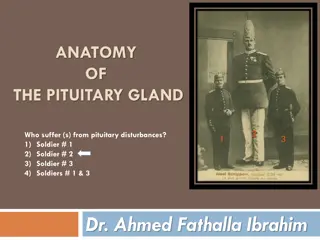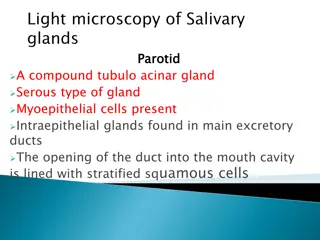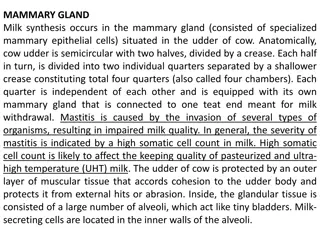The Pineal Gland: Key Role in Consciousness Manifestation
The pineal gland, a tiny yet significant gland in the human body, serves as a crucial link between the physical and conscious realms. Producing melatonin and regulating circadian rhythms, it is believed to play a central role in divine inspiration, intuition, and the mind-body connection.
Download Presentation

Please find below an Image/Link to download the presentation.
The content on the website is provided AS IS for your information and personal use only. It may not be sold, licensed, or shared on other websites without obtaining consent from the author.If you encounter any issues during the download, it is possible that the publisher has removed the file from their server.
You are allowed to download the files provided on this website for personal or commercial use, subject to the condition that they are used lawfully. All files are the property of their respective owners.
The content on the website is provided AS IS for your information and personal use only. It may not be sold, licensed, or shared on other websites without obtaining consent from the author.
E N D
Presentation Transcript
Esoteric Role of the Pineal Gland BY: VISHAL RAWAT
Description - The Pineal Gland is the smallest functional gland in the human body - It is located between the cerebellum and the thalamus - The gland is .25 inches long, which is about the size of a grain of rice, and weighs 100 mg - It is conical in shape which makes it easy to fit into a groove where two rounded thalamic bodies join - Also it is connected with the upper layer of the third ventricle
Description (cont.) - The pineal gland consists of five different cell types - Pinealocytes produce the hormone melatonin and consist of a cell body with 4-6 processes emerging - Interstitial cells are located between the pinealocytes - Perivascular phagocytes are located near the capillaries and they are antigen presenting cells - In some higher vertebrates neurons are located in the pineal gland called pineal neurons - Peptidergic neuron-like cells are located in some species - They would serve a paracrine regulatory function
Function - The pineal gland is one of the glands neurologists consider to be the master gland, including the pituitary gland - It is one of most important glands in the endocrine system - The pineal gland plays a key role in the manifestation of consciousness-force - It also regulates the cycle of the biochemical activities in an individual - It provides linkage between the body and mind - Rene Descartes, a French philosopher, describes the pineal gland as the connection between the ja a and the chetan - The ja a is the material component of the body and the chetan is consciousness power of the mind
Function (cont.) - Divine consciousness inspires one s mind through the extrasensory energy-nucleus - The energy nucleus, also referred to as the agy chakra in yoga- science, governs intuitive experience - The pineal gland secretes a hormone, melatonin, which reacts with darkness and maintains the circadian biorhythms - Circadian biorhythms are daily activity cycles that are based on a 24- hour intervals such as sleeping and walking in humans - Also it is associated with cyclic transitions of day and night - The hormone melatonin affects activities of neurons which control the process of sleeping
Research by Scientists - Greek Physician Herophilus described the pineal gland as the regulator of the thought process sometime in 400 BCE - Dr. Crookshak did numerous amounts of research on the endocrine system - His work has made significant contribution in identifying the effects of the endocrine glands on physiology and psychology - In his perspective the corporeal and intellectual health of an individual and his integral propensities could be assessed in terms of the level and pattern of hormonal secretions in the endocrine system. - Two micro anatomists, Dr. H.W. Graft and Dr. E. Baldwin Spencer carried out experiments which shows that the pineal gland responds to the optical signals received from the surroundings of a human
Spiritual Role - The pineal gland is considered to be directly connected with the gy chakra (third eye) - If the third eye is awakened it awakens viveka, which is prudence, wisdom, and righteous thinking - Viveka gradually evolves into spiritual insight after the third eye is awakened - If the person channelizes their creative talents, intelligence and virtuous potentials with the support of viveka, then he can find and use the otherwise hidden treasure of the unconscious mind - The awakened gy chakra purifies and illuminates the core layers of conscious, subconscious and unconscious mind, intellect and inner self
Spiritual Role (cont.) - Purifying and illuminating the core layers of mana, buddhi, chitta, and aha k r is a fundamental step in the s dhan of manomaya ko a - The mind can be restrained and refined by the s dhan s of opening of the gy chakra - In the Pur as it is mentioned, The burning of K madeva because of the opening of the third eye of Lord Shiva - It is an allegoric reference to show that the pineal gland, when activated, opens the third eye - If the gy chakra s power is refined it can open up the ways of sublime transformation
Pineal Gland Extra - It has been proven that as you grow older your pineal gland decreases in size - It is based on emotional levels, a child would have a bigger pineal because he/she is more emotional - The pineal gland is more developed and larger in people with spiritually elevated personalities and people that are more compassionate - These type of people have more spiritual potential to attain the sublime levels of chetan - Once the pineal gland is awakened it induces elevated flow of pr a which is vital spiritual energy
Conclusion - Many great people around the world were empowered by the internal energy and strength of their vital force - They used their talents for higher ideals with the help of their viveka - Their lives were endowed with such accomplishments that could be likened to divine boons
